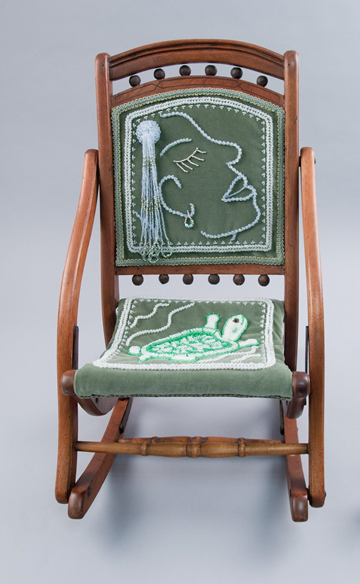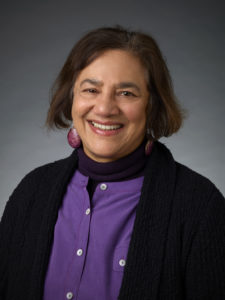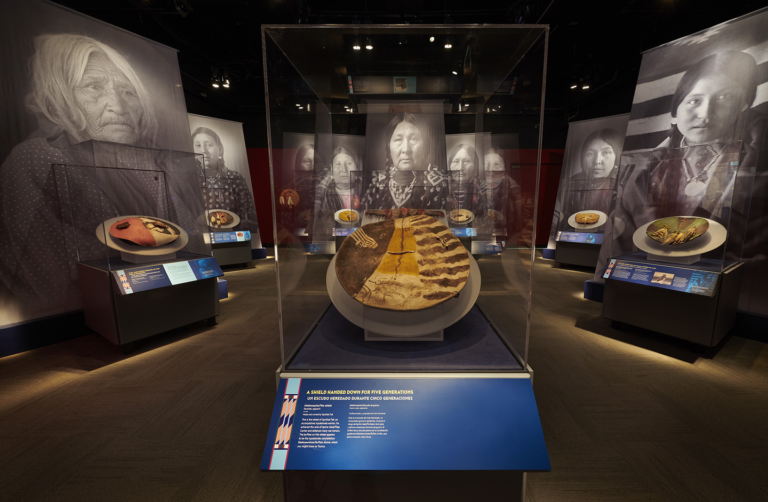Hoffman’s description of her piece:
“As I was walking through an antique store, I saw this child’s rocking chair. There were three panels on it, the perfect platform to tell the story of Sky Woman—how we Haudenosaunee (Iroquois) came to be. The chair said, “SkyWoman’s story needs to be on me,” so she’s my way to tell our creation story to people I’ll never meet. Then they’ll understand where we Iroquois come from. I’ll tell you the version of the story of SkyWoman as I know it, who fell through a hole at the root of the Ever Growing Tree to land on Turtle Island, where we all live today.”

SkyWoman (she/her)
Karen Ann Hoffman, Oneida
Stevens Point, Wisconsin, 2018
Wood, velvet, beads, thread

